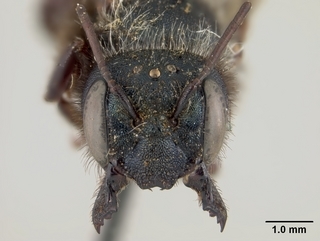
Smithsonian Institution, Entomology Department · 9
Osmia subaustralis, female, face |
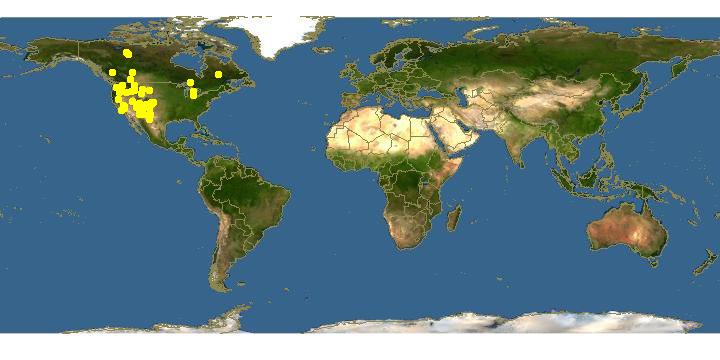
Click on map for details about points.
|
| Links | Reprinted with permission from: Mitchell, T.B. 1962 Bees of the Eastern United States. North Carolina Agricultural Experiment Station Technical Bulletin No. 152.
FEMALE—Length 10 mm.; bluish-green; face considerably longer than distance between eyes above; eyes subparallel; lateral ocelli subequally distant from eyes and margin of vertex, slightly nearer to each other; clypeus quite strongly convex and strongly produced apically, median area of apical margin shining and impunctate; median length of labrum somewhat greater than basal width; margin hypostome strongly carinate, these carinae slightly reduced toward base of mandible; mandibles somewhat constricted just before base, broadly expanded apically, with two distinct teeth and a broad, bevelled area above (as shown, fig. 32); width of cheeks nearly twice that of eyes; wings lightly infuscated, more deeply so in region of marginal cell, 2nd recurrent vein reaching 2nd submarginal cell considerably nearer apex than 1st does to base; tarsal segments simple and unmodified, front spurs yellowish-hyaline, mid and hind spurs piceous; pubescence rather thin but long and erect, pale, with an intermixture of blackish hairs on vertex and dorsum of thorax, on face, cheeks and basal abdominal tergum, largely blackish on clypeus, pleura and discs of abdominal terga 2-6, the scopa black; punctures in general, deep and distinct, but not very coarse, well separated and rather coarse on vertex, becoming very fine and close on face below, somewhat more coarse and irregular on clypeus, very fine and distinctly separated on cheeks medially, but becoming coarser and more shallow and obscure toward the hypostomal carinae; punctures rather densely crowded along anterior margin of scutum, becoming well separated along median line posteriorly, close and rather coarse on scutellum, rather shallow and densely crowded on the dull pleura; propodeum dull, densely tessellate, with no evident punctures; abdominal terga 2 and 3 with fine, well separated punctures medially, becoming somewhat finer and quite close toward sides, rather coarse on tergum 1 basally but becoming very fine and more sparse toward apical margin, somewhat coarser but well separated on 4, closer on 5, very close and minute on 6, apical margins of the terga rather narrowly impunctate and more bluish in color.
MALE — Length 10-11 mm.; head and thorax bluish-green above, somewhat more bluish below, basal abdominal tergum somewhat more greenish, the following terga blue, legs black; face somewhat longer than distance between eyes above; eyes very slightly convergent below; lateral ocelli subequally distant from eyes, margin of vertex and each other; clypeus only slightly convex, apical margin consideraly produced, slightly outcurved, with a very faint, median indentation; mandibles bi-dentate, teeth nearly equal; cheeks very slightly broader than eyes; wings subhyaline, veins testaceous to piceous, 2nd recurrent vein entering 2nd submarginal cell slightly nearer apex than 1st does to base; tarsal segments slender and simple, hind basitarsus without a median denticle; front spurs testaceous, mid and hind spurs black; pubescence pale ochraceous to whitish, rather long and copious on face, vertex, dorsum of thorax and basal abdominal tergum, largely black on legs and terga 2-6; cheeks with rather short, pale pubescence interspersed with elongate black hairs, front femora with a tuft of whitish hairs posteriorly, pleura with intermixed light and dark hairs, and propodeum largely black pubescent laterally, pale pubescent medially; punctures fine and close on head and thorax, but somewhat coarser and more distinct between eyes and ocelli and on upper part of face, fine and densely crowded on clypeus beneath dense pubescence, quite closely crowded on cheeks and over most of scutum, but somewhat more distinct on scutum along mid-line posteriorly, those on scutellum quite coarse, deep and distinct but still close; punctures of abdominal terga minute and slightly separated but still quite close, becoming more closely crowded on the more apical plates; tergum 6 rather broadly rounded apically, with a very small and obscure, median emargination; tergum 7 narrowly but abruptly produced medially, this area quite broadly emarginate; sternum 2 broadly rounded apically, not hiding apical margin of 3 which is quite deeply emarginate medially, this area densely fringed with rather elongate hairs which do not meet along mid-line (somewhat as in inspergens, fig. 33); sternum 4 rather narrowly produced medially, this area slightly incurved and fringed with dark hairs, 6 entirely retracted, its apical margin rather narrowly produced medially, with a rather small tuft of hairs on each extreme side, 7 slightly sclerotized medially, this area produced and abruptly truncate; apex of gonocoxites as shown (fig. 31).
DISTRIBUTION—Washington and Oregon to New Mexico, east to Michigan, June and July. This is the first record of this species in the East, the collection data as follows: 5 , Alpena Co., Mich., July 4, 1940 (Dreisbach).
In the type specimen, a female from New Mexico, the mandibles are not quite as broad apically as in this series from Michigan, the space between the ocelli and margin of vertex is somewhat narrower, and the rims of the abdominal terga are strongly reddened. The degree of these differences does not seem to justify recognition of this eastern form as a subspecies, at least until males also have been studied. The male described above is from Oregon and was identified by Sandhouse.
Another subspecies, austromontana Michener, occurs in southern California.
- Hosts
|
80x5 -
240x3 -
240x4 -
320x1 -
320x2 -
320x3 -
640x1 -
640x2
Set display option above.
Click on
images to enlarge. |
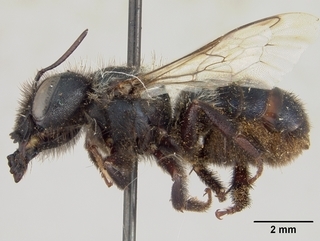
Smithsonian Institution, Entomology Department · 9
Osmia subaustralis, female, side |
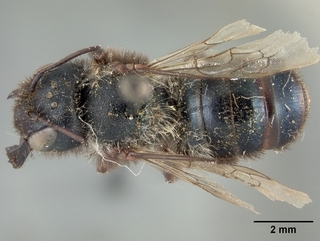
Smithsonian Institution, Entomology Department · 9
Osmia subaustralis, female, top |
|
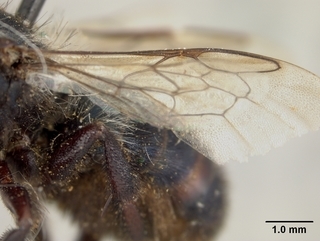
Smithsonian Institution, Entomology Department · 9
Osmia subaustralis, female, wing |
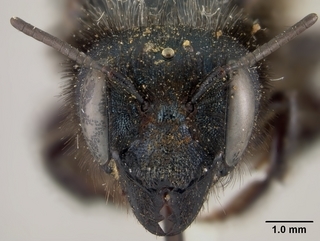
Smithsonian Institution, Entomology Department · 9
Osmia subaustralis, female, face |
|
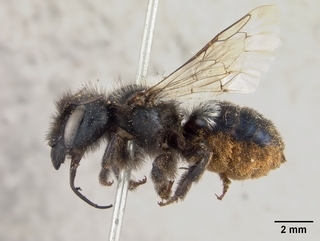
Smithsonian Institution, Entomology Department · 9
Osmia subaustralis, female, side |
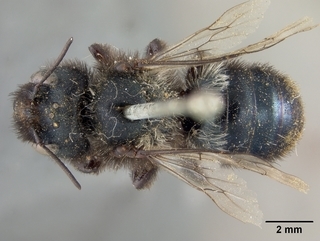
Smithsonian Institution, Entomology Department · 9
Osmia subaustralis, female, top |
|
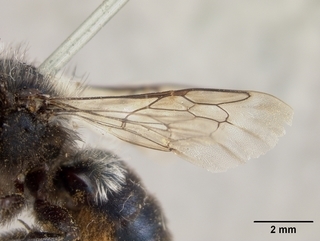
Smithsonian Institution, Entomology Department · 9
Osmia subaustralis, female, wing |
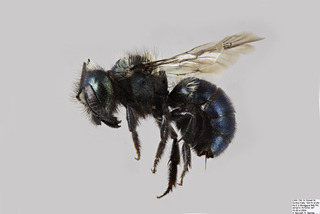
© Copyright Laurence Packer 2014
· 7
Osmia subaustralis FEM |
|
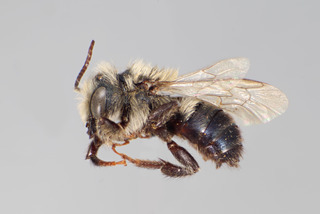
© Copyright Laurence Packer 2014
· 7
Osmia subaustralis MALE CFP |
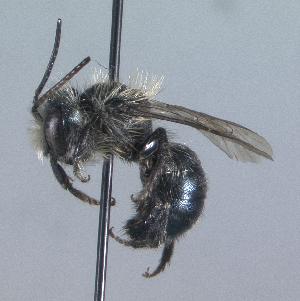
Barcode of Life Data Systems · 1
Osmia subaustralis, Barcode of Life Data Systems |
|
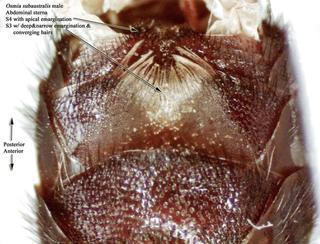
© USDA Bee Biology and Systematics Laboratory, Logan Utah
· 1
Osmia subaustralis, bbSL194767 male, s3 copy |
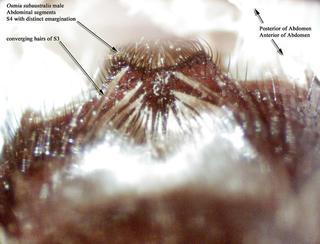
© USDA Bee Biology and Systematics Laboratory, Logan Utah
· 1
Osmia subaustralis, bbSL194767 male, s4 copy |
|
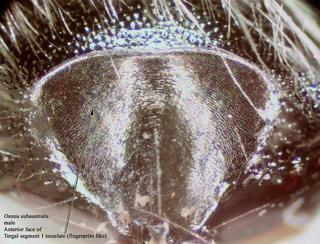
© USDA Bee Biology and Systematics Laboratory, Logan Utah
· 1
Osmia subaustralis, bbSL194767 male, t1 anterior face copy |
Updated: 2024-04-25 00:45:00 gmt
|